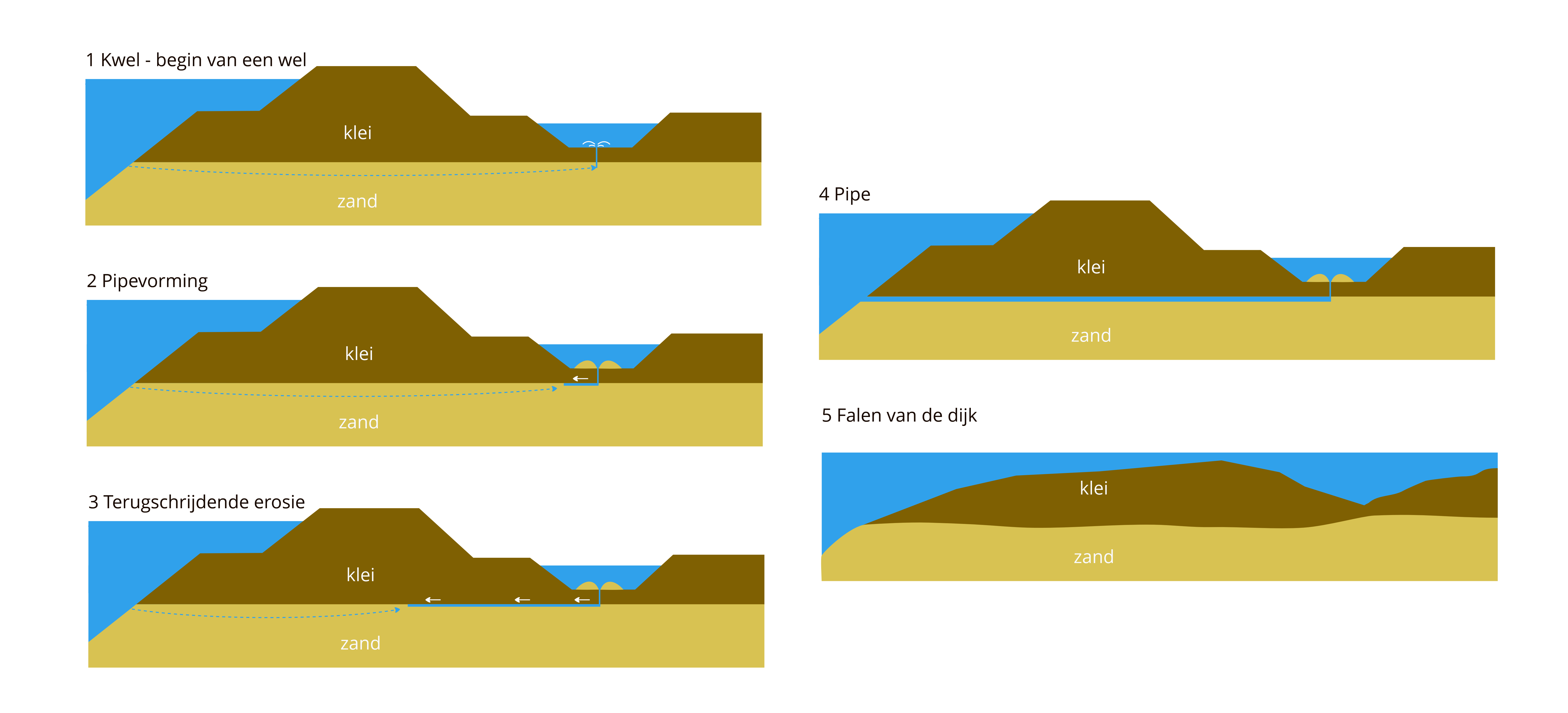
Piping, a major failure mechanism in dikes
-
Joint research by six water boards shows that of the 940 km of dikes reviewed, approximately 540 km do not satisfy the new calculation rules for piping. This means that according to the new standard, nearly 60% of the dikes are insufficiently protected against the piping failure mechanism.
But what is piping exactly?
Joint research by six water boards shows that of the 940 km of dikes reviewed, approximately 540 km do not satisfy the new calculation rules for piping. This means that according to the new standard, nearly 60% of the dikes are insufficiently protected against the piping failure mechanism.
Vertical Sand-proof Geotextile as a piping protection measure
Inserting a sand-proof barrier on the landward side of the dike is a relatively simple, sustainable and swift solution for preventing piping. While this geotextile is permeable for water, it does not let through sand grains. The ‘pipe’ developing under the landside slope is stopped in its tracks by the barrier:
The following clip explains how this failure mechanism works, and what it looks like in a dike.
NEARLY 60% OF DIKES FALL SHORT OF STANDARDS
Joint research by six water boards shows that of the 940 km of dikes reviewed, approximately 540 km probably do not satisfy the new calculation rules for piping.
